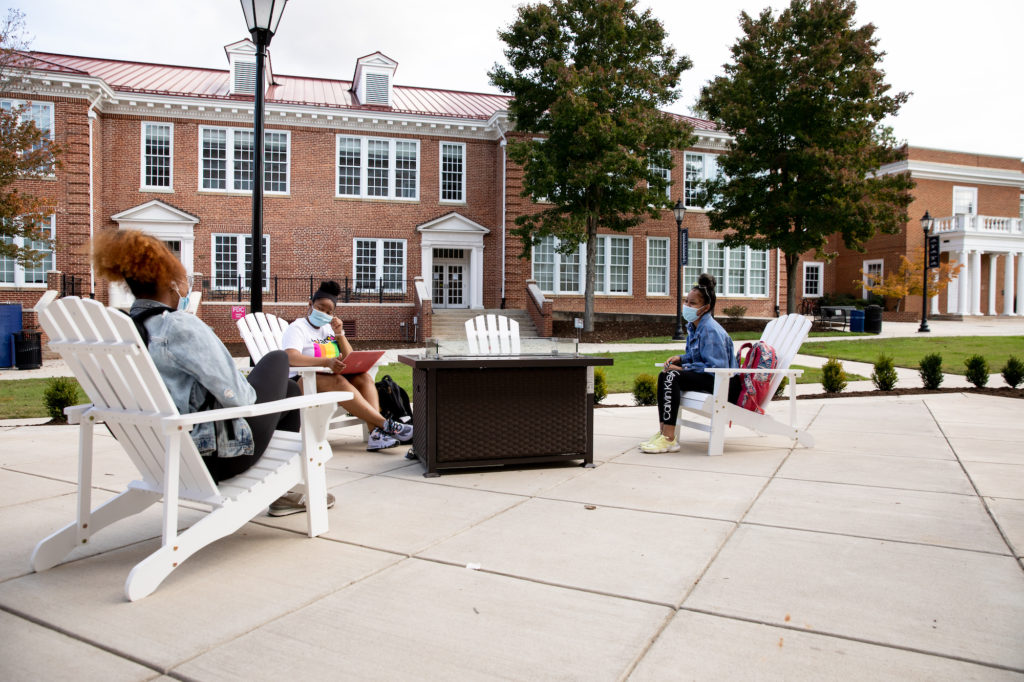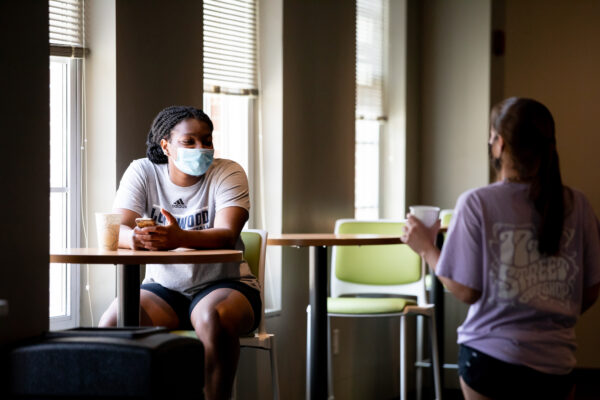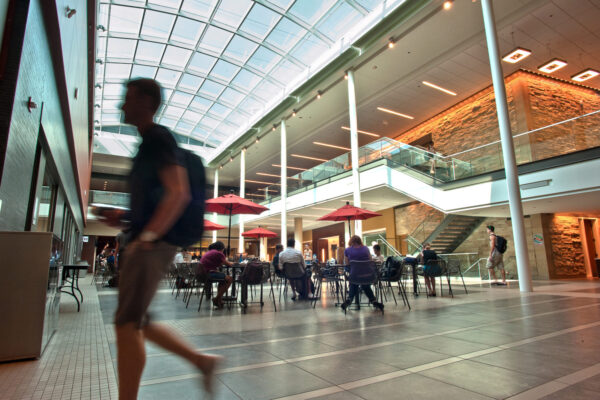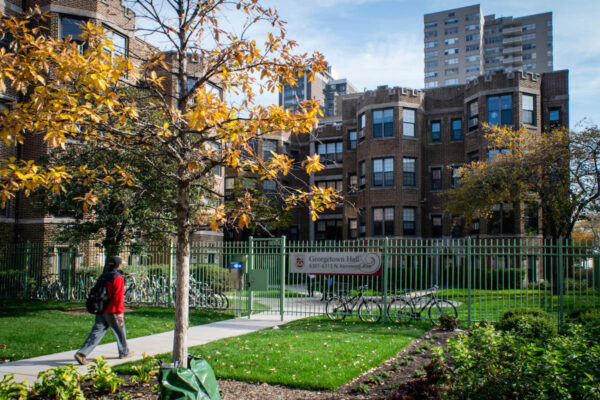By Justin Pope
Higher education’s fifth semester of the COVID era is underway. The challenges remain, but this one feels different. Most colleges are pushing forward more courageously, prioritizing students and their mental health. Thanks to experience, the different nature of omicron, and broad political and public recognition of the need to persevere through COVID-19, we are in a new phase.
I hope we’ll also see a shift in perspective on how many if not most colleges and universities navigated COVID during 2020 and 2021, when circumstances were different. Journalism’s first draft of history was rough. Early on, college students were mercilessly portrayed as irresponsible vectors who endangered surrounding communities. Institutions were lambasted either for overreacting and feeding lockdown panic or for ploughing ahead out of financial greed.
As someone with both an academic background in history and a first career in journalism before moving to higher ed, I’ve felt hopeful all along that future drafts of history might prove more favorable. Nearly two years now into the pandemic, it remains appropriate to acknowledge the range of responses across higher education, not all of them glorious. But it’s also undeniable that many institutions have done remarkably well in the face of what was reasonably seen as an existential threat.
There are tales of courage and genuine heroism among the staff who made it happen. For all their bad press, the vast majority of 20-million-plus college students in the United States did all we could reasonably have asked of them amidst a pandemic that deprived them of so much of a precious chapter of their lives.
What’s also missing from that harsh first draft is how many colleges were successful examples of what almost no other sector of society achieved: communities that have returned to relative normalcy and protected the vulnerable with high vaccination rates, mitigation measures and community buy-in. Also, colleges pulled off the kind of prompt and effective contact-tracing regimen that almost no other societal institution managed. Many, like my institution, served as vaccination sites and contributed nursing faculty and students to community vaccination efforts.
It’s a story we need to tell better—not just the what, but the how and why.
Residential colleges leading the way
As at most institutions, the spring of 2020 was a dark time at Longwood, the 182-year-old public university in Virginia where I serve as chief of staff. But even in the most pessimistic moments, we were guided by faith in an idea that held little popular sway at the start of the pandemic: that the distinctively American residential nature of liberal arts college campuses could be a strength, not a weakness, in the face of the pandemic.
We were going against the current in the early days of COVID, when residence halls were equated with cruise ships in the national media. Furlough announcements were starting to emerge from campuses. There were grave doubts whether colleges could reopen in the fall of 2020, as worries about the catastrophic effects on students and institutions took a back seat.
Against that backdrop, Longwood President Taylor Reveley, and Larry Stimpert, the president of Hampden-Sydney, the private college and neighbor in our two-college town west of Richmond, penned an op-ed in the Richmond Times-Dispatch, making the case for why colleges could and must reopen. The source of their confidence was a counterintuitive one.
“Colleges, particularly residential ones like Longwood and Hampden-Sydney, have the useful tools of traditions, habits and practices that guide student life,” the presidents wrote, and which could be deployed to mitigate spread. The residential nature of colleges—their structures of community and governance, their focus on the liberal arts (and the complicated issues of citizenship a pandemic draws out), their sense of common purpose and mutual responsibility—these hallmarks of great American liberal arts colleges were strengths, not weaknesses, to bring to bear in the challenges ahead.

Last summer, with an eye toward history, I was asked to compile for Longwood’s governing board a narrative report telling the story of our pandemic year. I interviewed more than a dozen key participants, reviewed (somewhat traumatically) hundreds of emails to create the timeline of those first eventful months, and tried to do some justice to the sweep of the experience on our campus. It’s an exercise I would encourage other institutions to follow.
In assembling the report and looking for themes that brought coherence to the experience, I found myself returning regularly to this notion that our residential nature was a strength. One benefit was the sense of community and mutual accountability that proved to be a fundamental trait of campus life. As we prepared to welcome students back in the fall of 2020, facing some wariness in corners of the local community, we deployed the language and tradition of our honor code in asking students to follow rules.
Students seemed to grasp this intuitively—an honor code is, at heart, a form of modest personal sacrifice that makes possible broader freedom and trust. Of course, we saw lapses. But overall, our students proved far more attentive to masking rules than many off campus. Our local paper, the Farmville Herald, acknowledged in a December 2020 editorial as the semester ended successfully that the broader community “could learn a few things from students.” In 2021, the pattern repeated itself as the vast majority of our students, faculty and staff were vaccinated
This new semester began, not surprisingly, with a bump in case numbers on campus. But the colleges pushing ahead are modeling a future of managing endemic COVID, as we regularly managed other contagious illnesses on campuses long before.
The apparatus of student affairs—resident advisors, experienced administrators, a health center used to dealing with college students and infectious disease—also proved useful. Occupancy of our isolation/quarantine residence hall ranged from a handful to, at times, several dozen. But they were carefully monitored and fed, and kept up with classes.
Then there was contact tracing. The mechanism broke down almost everywhere as a meaningful and effective response to positive COVID cases. But not at many residential college campuses. The structure of community and oversight allowed the Student Affairs veterans who worked closely with our Health Center on contact tracing to act quickly and knowledgeably, identifying class schedules and other information that could be helpful. Soon the process was an exact science: the Health Center would typically make the call to the team initiating the work while in the room delivering the news of a positive test to a student.
Time really mattered, and we could see through our charts of students an enormously high proportion of positive cases had been identified through contact tracing and required to quarantine and test. Often they were asymptomatic. We were never happy to learn a student was positive. But when it was a student we had already identified as at-risk and put into quarantine, it was an indication the system was working. We had found our way to the right people, and limited their risk to others.
Over the 2020-21 academic year, Longwood, with about 4,500 students, had 366 confirmed positive cases amount our students, faculty, and staff. We met our goals of continuing in-person learning and protecting the most vulnerable in our community until vaccinations were available.
Like other campuses, confronting a milder variant and a highly vaccinated community, this semester we are moving in the direction of a more a sustainable set of practices that give community members tools to manage their own risks, and away from population-level controls. It’s a transition with which much of society is struggling. Once again, with this chapter, I believe history will show many liberal arts colleges were in the lead.
If you have any questions or comments about this blog post, please contact us.


